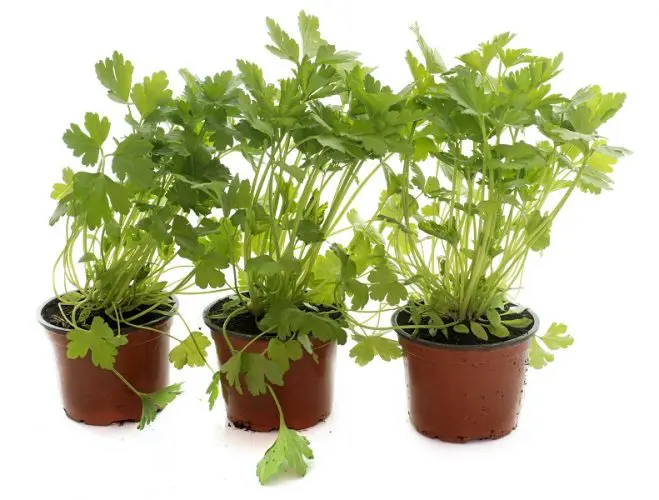- Parsley: A Guide to Growing It on Your Windowsill and Vegetable Garden
- Introduction
- Choosing the Right Varieties
- Planting Parsley
- Caring for Parsley
- Harvesting Parsley
- Recipes Using Parsley
- Conclusion
- Types of Parsley
- Flat-leaf Parsley
- Curly Parsley
- Hamburg Parsley
- Choosing the Right Location
- Preparing the Soil
- 1. Select a sunny location
- 2. Clear the area
- 3. Test the soil
- 4. Amend the soil
- 5. Level the soil
- 6. Create furrows or raised beds
- 7. Water the soil
- Planting Parsley Seeds
- Watering and Fertilizing
- Watering
- Fertilizing
- Harvesting and Pruning
- Harvesting Parsley
- Pruning Parsley
- Parsley Pests and Diseases
- Pests
- Diseases
- Prevention and Treatment
- Tips for Using Parsley in the Kitchen
- 1. Garnish
- 2. Flavor Enhancer
- 3. Herb Butter
- 4. Pesto
- 5. Herb Salad
- 6. Juice or Smoothie
- “Question-Answer”
- What is parsley?
- How do I grow parsley on my windowsill?
- Can I grow parsley in my vegetable garden?
- When should I plant parsley seeds?
- How long does it take for parsley to grow?
- Can I grow parsley from cuttings?
- How do I harvest parsley?
- “Video” How to Grow Parsley from Seed in Pots
Are you a fan of fresh herbs? Do you love adding a touch of parsley to your dishes? Well, look no further! In this article, we will guide you on how to grow parsley right on your windowsill and vegetable garden.
Parsley is a versatile and easy-to-grow herb that can be enjoyed both for its culinary and medicinal properties. It is a rich source of vitamins and minerals, including vitamin C, vitamin K, and folate. Not only does it add a burst of flavor to your dishes, but it also offers numerous health benefits.
Whether you have a small apartment with limited space or a spacious garden, you can easily grow parsley. Its compact size and adaptability make it an ideal herb for window gardening. By following a few simple steps, you can have a fresh supply of parsley at your fingertips all year round.
In this article, we will cover the basics of growing parsley, including choosing the right variety, preparing the soil, sowing the seeds, and caring for your plants. We will also discuss harvesting and storing parsley to ensure you have a constant supply of this aromatic herb. So, let’s get started and learn how to grow parsley on your windowsill and vegetable garden today!
Parsley: A Guide to Growing It on Your Windowsill and Vegetable Garden
Introduction

Parsley is a versatile herb that can be grown easily on your windowsill or in your vegetable garden. It not only adds flavor to your dishes but also provides a fresh and green touch to your indoor or outdoor space. In this guide, we will walk you through the steps of growing parsley, from planting seeds to harvesting fresh leaves.
Choosing the Right Varieties
There are two main types of parsley: curly leaf and flat leaf. Curly leaf parsley is more commonly used as a garnish and has a milder flavor. Flat leaf parsley, also known as Italian parsley, has a stronger flavor and is often used in cooking. Choose the variety that suits your taste and culinary preferences.
Planting Parsley
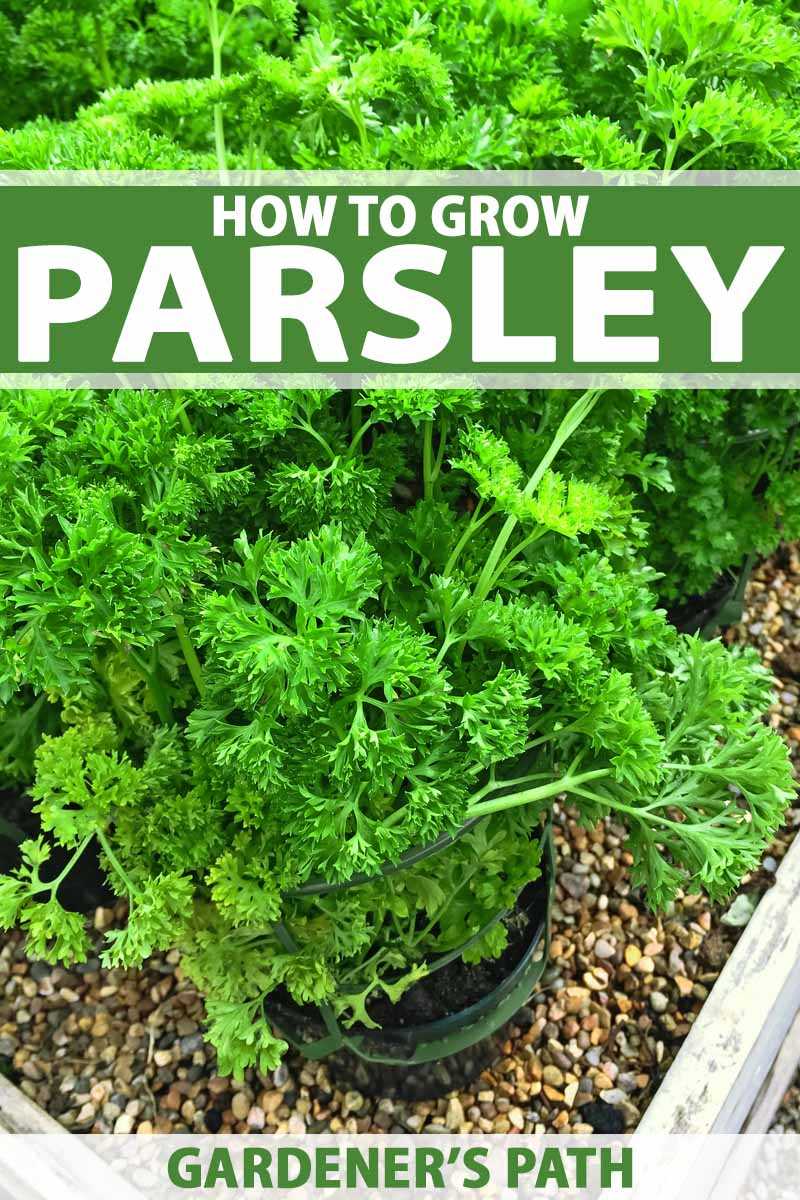
Windowsill: To grow parsley on your windowsill, you will need a container with drainage holes. Fill it with well-draining potting soil and sow the parsley seeds about 1/4 inch deep. Water the soil and place the container in a sunny spot. Keep the soil consistently moist and you will see the seeds germinate in about two weeks.
Vegetable Garden: If you prefer to grow parsley in your vegetable garden, choose a location with full sun to partial shade. Prepare the soil by adding compost or organic matter. Sow the seeds directly into the soil, spacing them about 6 inches apart. Water the seeds and keep the soil moist until germination occurs.
Caring for Parsley
Parsley requires regular watering to ensure proper growth. Keep the soil evenly moist, but avoid overwatering as it can lead to root rot. Mulching around the plants can help retain moisture and suppress weed growth.
Pinch off any flower buds that appear to prevent the plant from bolting, as parsley is a biennial and will produce flowers and go to seed in its second year of growth.
Harvesting Parsley
Parsley can be harvested once the leaves are large enough to use. Cut the outer leaves, leaving the center intact to encourage regrowth. Use fresh parsley immediately or store it by wrapping it in a damp paper towel and placing it in a resealable bag in the refrigerator.
Recipes Using Parsley

Parsley can be used in a variety of recipes, from salads and soups to sauces and marinades. Here are a few ideas to get you started:
- Tabbouleh: A refreshing Middle Eastern salad made with parsley, bulgur, tomatoes, onions, and lemon juice.
- Pesto: A classic Italian sauce made with parsley, garlic, pine nuts, Parmesan cheese, and olive oil.
- Parsley Potatoes: Boil baby potatoes and toss them with melted butter, minced parsley, and salt.
Conclusion
Growing parsley on your windowsill or in your vegetable garden is a rewarding experience. With just a little care, you can enjoy fresh parsley leaves for your culinary creations all year round. Whether you choose the curly or flat leaf variety, parsley will surely add a fresh and vibrant touch to your dishes.
Types of Parsley
Flat-leaf Parsley
Also known as Italian parsley, flat-leaf parsley has flat, serrated leaves that are dark green in color. It has a stronger flavor compared to curly parsley and is commonly used in Mediterranean and Middle Eastern cuisine. Flat-leaf parsley is a versatile herb that can be used in soups, stews, sauces, and as a garnish.
Curly Parsley

Curly parsley is easily recognizable by its tightly curled leaves. It has a milder flavor compared to flat-leaf parsley and is often used as a decorative garnish. While it can be used in cooking, it is not as popular as flat-leaf parsley for culinary purposes.
Hamburg Parsley
Hamburg parsley, also known as turnip-rooted parsley, is grown for its root rather than its leaves. The root has a mild, slightly sweet flavor and is often used in soups, stews, and salads. The leaves of Hamburg parsley can also be used in cooking, similar to flat-leaf parsley.
Choosing the Right Location
When it comes to growing parsley, choosing the right location is crucial for its successful growth.
Here are some important factors to consider when selecting a location for your parsley plants:
- Sunlight: Parsley prefers a location that receives at least 4-6 hours of direct sunlight each day.
- Temperature: Parsley grows best in temperatures between 60-70 degrees Fahrenheit. It is important to choose a location that provides adequate temperature conditions throughout the growing season.
- Soil: Parsley prefers well-draining soil that is rich in organic matter. The pH level of the soil should be between 6.0 and 7.0 for optimal growth.
- Protection: Consider choosing a location that provides some protection from strong winds, as parsley can be prone to wind damage.
Whether you are growing parsley in a windowsill or vegetable garden, make sure to choose a location that meets these requirements to ensure healthy and thriving plants.
Preparing the Soil
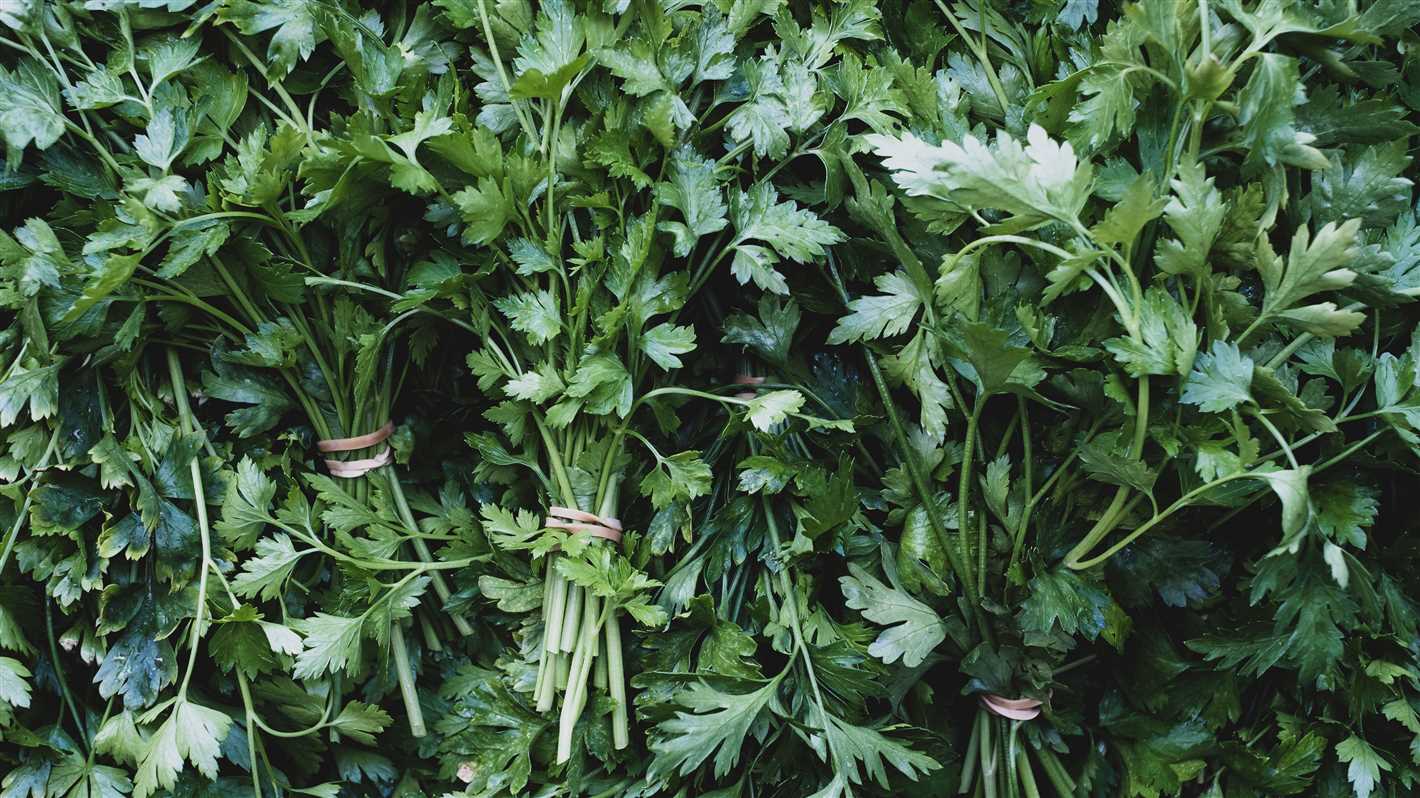
Before planting parsley, it is important to prepare the soil properly to provide the best growing conditions for the herb. Follow these steps to prepare the soil:
1. Select a sunny location
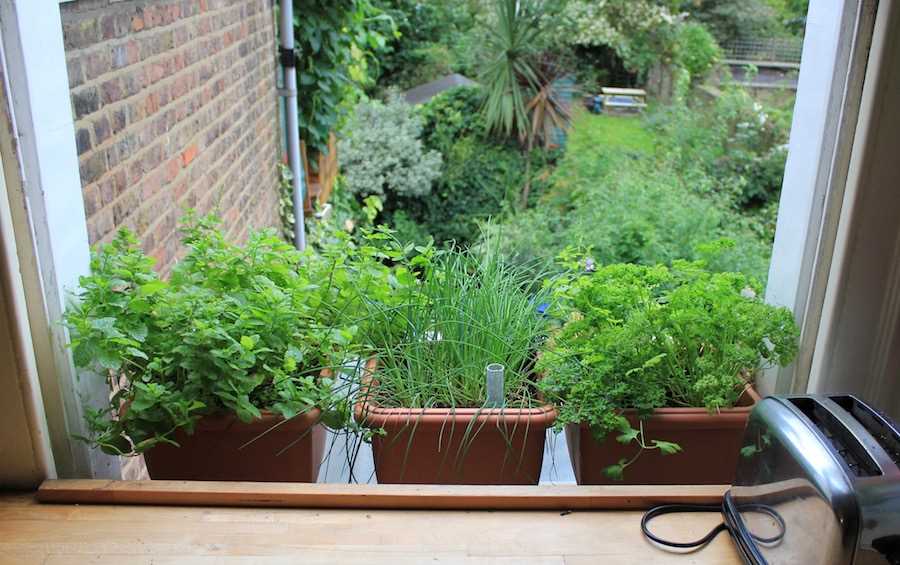
Parsley thrives in full sun, so choose a location that receives at least 4-6 hours of direct sunlight per day.
2. Clear the area
Remove any weeds or grass from the planting area. Use a garden rake or hoe to loosen the soil and remove any debris.
3. Test the soil
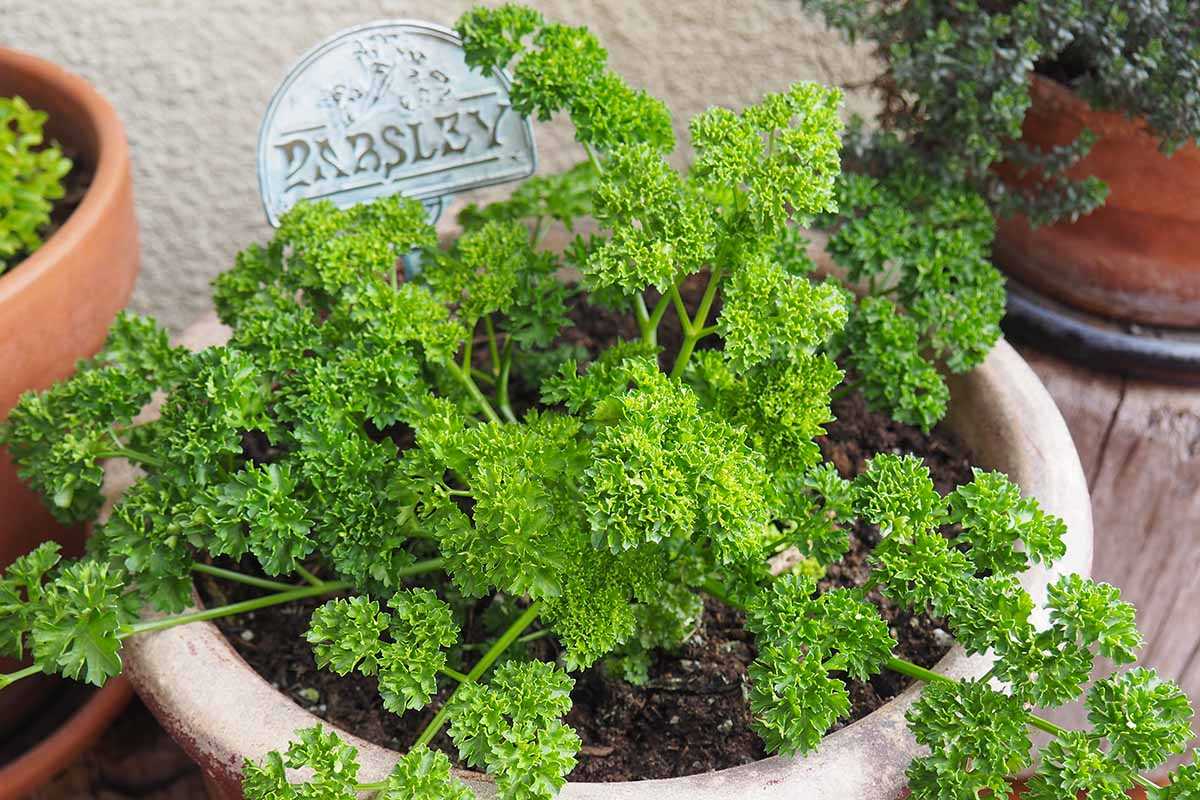
Take a soil sample and test its pH level. Parsley prefers a slightly acidic to neutral soil pH of 6.0-7.0. Adjust the pH level if necessary by adding organic matter or using soil amendments.
4. Amend the soil
Add organic matter, such as compost or aged manure, to improve the soil’s fertility, drainage, and moisture-holding capacity. Work the organic matter into the top 6-8 inches of soil using a garden fork or tiller.
5. Level the soil
Smooth out the soil surface with a rake to create a level planting bed. This will ensure even water distribution and prevent pooling or drainage issues.
6. Create furrows or raised beds
If planting in rows, create furrows spaced about 12-18 inches apart. Each furrow should be around 1/4 to 1/2 inch deep. For raised beds, create mounds of soil that are about 6-12 inches high and 12-18 inches wide.
7. Water the soil
Thoroughly water the soil before planting parsley seeds or transplants. This will help settle the soil and provide initial moisture for germination or root establishment.
By properly preparing the soil, you will create an optimal growing environment for your parsley plants, ensuring healthy growth and abundant harvest.
Planting Parsley Seeds
Planting parsley seeds is a simple and rewarding process that can be done in your windowsill or vegetable garden. Follow these steps to successfully grow parsley from seeds:
- Choose the right time to plant: Parsley seeds can be planted in early spring or late summer. The soil temperature should be around 50-70°F (10-21°C).
- Prepare the soil: Parsley prefers well-draining soil that is rich in organic matter. Loosen the soil to a depth of about 8-10 inches (20-25 cm) and remove any weeds or debris.
- Sow the seeds: Create shallow rows in the soil, about 1/4 inch (0.6 cm) deep. Space the rows about 12 inches (30 cm) apart. Sprinkle the parsley seeds evenly along the rows.
- Cover the seeds: Lightly cover the seeds with a thin layer of soil or compost. Do not bury them too deeply, as parsley seeds require light to germinate.
- Water the seeds: Gently water the soil to keep it moist but not soaked. Avoid over-watering, as it can cause the seeds to rot.
- Provide sunlight: Place the planting container or garden bed in a sunny location that receives at least 6 hours of sunlight daily. If growing indoors, ensure the plants have access to natural or artificial light.
- Keep the soil moist: Regularly check the soil moisture and water when it feels dry to the touch. Avoid letting the soil dry out completely, as parsley plants prefer consistently moist soil.
- Thin out the seedlings: Once the parsley seedlings have sprouted and grown a few inches tall, thin them out to about 6-8 inches (15-20 cm) apart. This allows the remaining plants ample space to grow and reduces competition for nutrients.
- Harvest the parsley: When the parsley plants reach a height of 6-8 inches (15-20 cm), you can begin harvesting the leaves. Cut the outer stems close to the base, leaving the inner stems to continue growing.
By following these steps, you can successfully plant parsley seeds and enjoy fresh, flavorful parsley in your windowsill or vegetable garden. Remember to provide adequate sunlight, water, and care to ensure healthy growth.
Watering and Fertilizing
Proper watering and fertilizing are essential for the healthy growth of parsley in both windowsill and vegetable garden settings. Here are some tips to ensure your parsley plants receive the right amount of water and nutrients:
Watering
- Water parsley plants deeply and evenly to ensure that the entire root system is adequately hydrated. This will help prevent shallow root growth.
- Check the moisture level of the soil regularly by sticking your finger about an inch deep into the soil. If it feels dry at this depth, it’s time to water.
- Avoid overwatering, as parsley prefers slightly moist soil rather than constantly wet conditions. Watering once or twice a week is usually sufficient.
- Use a watering can or a hose with a gentle spray nozzle to avoid damaging the delicate parsley leaves.
- Water in the morning or early afternoon to allow the foliage to dry before evening, reducing the risk of fungal diseases.
Fertilizing
- Apply a slow-release fertilizer or organic compost to the soil before planting parsley. This will provide a steady supply of nutrients throughout the growing season.
- Alternatively, you can use liquid fertilizer, diluted according to the instructions on the packaging, every two weeks during the growing season.
- Avoid over-fertilizing, as excessive nitrogen can lead to lush foliage but reduced flavor in the parsley leaves.
- Regularly remove any weeds around the parsley plants, as they can compete for nutrients and water.
By following these watering and fertilizing practices, you can ensure that your parsley plants receive the necessary care to thrive and provide you with an ample harvest of flavorful leaves.
Harvesting and Pruning
Harvesting Parsley
Harvesting parsley is a simple process that can be done throughout the growing season. To harvest parsley, follow these steps:
- Wait for the parsley plant to reach a height of about 6-8 inches.
- Select the outermost stems and leaves to harvest first.
- Cut the stems about 1 inch above the soil level using scissors or pruning shears.
- If you need a larger amount of parsley, you can harvest additional stems and leaves from the plant as needed, but always leave at least one-third of the plant intact.
Freshly harvested parsley can be used immediately in your favorite recipes, or you can store it for later use. To store parsley, place it in a plastic bag or container and store it in the refrigerator. It will stay fresh for about 1-2 weeks.
Pruning Parsley
Pruning parsley is an important part of maintaining healthy and productive plants. Here are some tips for pruning parsley:
- Regularly trim off any yellow or brown leaves to keep the plant looking tidy.
- Pinch off the flowers that appear on the parsley plant. This will help the plant focus its energy on producing more foliage instead of setting seeds.
- When pruning, make sure to cut the stems just above a leaf node to encourage new growth.
- Pruning can be done throughout the growing season whenever you notice signs of overgrowth or when you need fresh parsley for cooking.
By regularly harvesting and pruning your parsley plants, you can ensure a continuous supply of fresh and flavorful parsley throughout the season.
Parsley Pests and Diseases
Pests
Parsley plants can be susceptible to various pests that can damage their leaves and roots. Here are some common pests that you may encounter while growing parsley:
- Aphids: These small, soft-bodied insects can cluster on the stems and leaves of parsley plants, sucking sap and causing distortion or stunting of plant growth.
- Caterpillars: Caterpillars, such as parsley worms or parsley caterpillars, can chew through the leaves of parsley plants, causing significant damage to the foliage.
- Spider Mites: These tiny pests are not insects, but rather relatives of spiders. They can cause yellowing of the leaves and the appearance of fine webbing on the plants.
- Slugs and Snails: These slimy creatures can feast on parsley plants, leaving large holes in the leaves and damaging the overall appearance of the plant.
Diseases
Parsley can also be susceptible to certain diseases that can affect its growth and overall health. Here are some common diseases that parsley plants can encounter:
- Root Rot: Root rot is a fungal disease that can affect the roots of parsley plants, causing them to decay and eventually leading to the death of the plant.
- Leaf Spots: Leaf spots are fungal infections that can cause dark spots or lesions to appear on the leaves of parsley plants, potentially weakening the plant and leading to leaf drop.
- Parsley Yellow Dwarf Virus: This viral disease can cause stunted growth, yellowing of the leaves, and overall poor vigor in parsley plants.
- Parsley Smut: Smut is a fungal disease that can affect the leaves and stems of parsley plants, causing dark, dusty spore masses to appear on the affected parts.
Prevention and Treatment
To prevent and control pests and diseases in your parsley plants, it’s important to maintain a healthy growing environment and practice good gardening practices. Here are some tips:
- Plant parsley in well-draining soil and avoid over-watering, as excessive moisture can create conditions favorable for disease development.
- Inspect your plants regularly for signs of pests or diseases, and take appropriate action as soon as you notice any issues. This may include manually removing pests, spraying with organic insecticides, or using cultural control methods.
- Encourage beneficial insects, such as ladybugs and lacewings, to your garden as they can help control pest populations naturally.
- Rotate parsley with other crops to prevent the buildup of pests and diseases in the soil.
- Remove and destroy any affected plants or plant parts to prevent further spread of diseases.
By following these preventive measures and taking prompt action when needed, you can minimize the impact of pests and diseases on your parsley plants and ensure a healthy harvest.
Tips for Using Parsley in the Kitchen

Parsley is a versatile and flavorful herb that can add a burst of freshness to a variety of dishes. Here are some tips for using parsley in the kitchen:
1. Garnish
One of the most common uses for parsley is as a garnish. Sprinkle freshly chopped parsley over soups, salads, or any dish that could use a pop of color and freshness. It adds a beautiful green touch and a mild, herbaceous flavor.
2. Flavor Enhancer
Parsley can be used as a flavor enhancer in a wide range of dishes. Its mild taste pairs well with many ingredients and can help elevate the flavors of your recipes. Add chopped parsley to sauces, marinades, dressings, and even stir-fries for an extra layer of taste.
3. Herb Butter
Add a twist to your regular butter by making parsley herb butter. Simply blend softened butter with minced parsley, a pinch of salt, and any other herbs or spices you like. Use this herb-infused butter to spread on bread, melt over steamed vegetables, or even top a grilled steak.
4. Pesto
Parsley can be used as an alternative to basil in pesto. Blend together parsley, garlic, nuts (such as pine nuts or walnuts), Parmesan cheese, olive oil, and a squeeze of lemon juice. This parsley pesto is perfect for pasta, sandwiches, or as a dip.
5. Herb Salad
Create a vibrant and refreshing herb salad by combining parsley with other fresh herbs like basil, mint, and cilantro. Toss the herbs together with some lemon juice, olive oil, salt, and pepper. This herb salad can be enjoyed on its own or used as a topping for grilled meats or roasted vegetables.
6. Juice or Smoothie
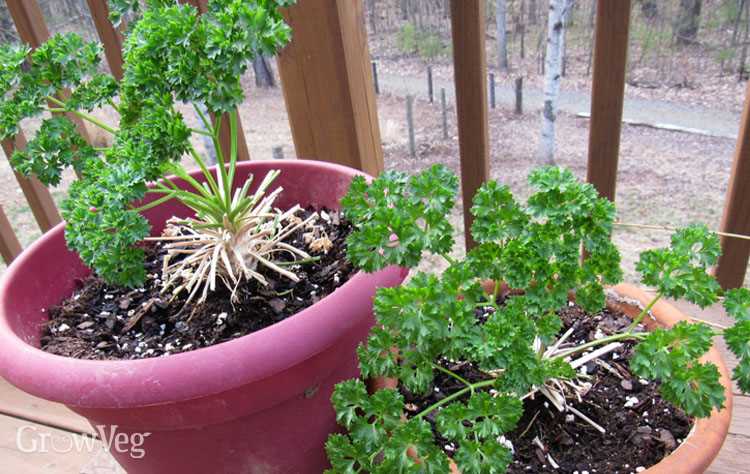
Include parsley in your juices or smoothies for an added nutritional boost. Its fresh taste pairs well with fruits like apple, pear, or pineapple. Blend parsley together with your favorite fruits and vegetables for a healthy and refreshing drink.
Remember, freshly chopped parsley is always best for maximum flavor and aroma. So, keep a bunch of parsley on hand and experiment with different ways to incorporate this versatile herb into your dishes.
“Question-Answer”
What is parsley?
Parsley is a fragrant herb that is commonly used as a garnish or ingredient in various dishes.
How do I grow parsley on my windowsill?
To grow parsley on your windowsill, you will need a pot, potting soil, and parsley seeds. Fill the pot with soil, plant the seeds, and place the pot near a sunny window. Water the parsley regularly and it should start to grow within a few weeks.
Can I grow parsley in my vegetable garden?
Yes, parsley can be grown in a vegetable garden. It prefers well-drained soil and full sun. Plant the parsley seeds or seedlings in a sunny spot in your garden and water regularly. You can harvest the parsley leaves as needed for your cooking.
When should I plant parsley seeds?
Parsley seeds can be planted in the spring or fall. If planting in the spring, wait until after the last frost. If planting in the fall, do so at least 2-3 months before the first expected frost.
How long does it take for parsley to grow?
Parsley typically takes 2-3 weeks to germinate and 70-90 days to reach maturity. However, you can start harvesting parsley leaves once the plant has reached a reasonable size.
Can I grow parsley from cuttings?
No, parsley is typically grown from seeds or seedlings. It is not common to propagate parsley from cuttings.
How do I harvest parsley?
To harvest parsley, simply cut off the outer leaves at the base of the plant. Leave the inner leaves and center of the plant intact to allow for continued growth. You can harvest parsley leaves as needed for your recipes.
